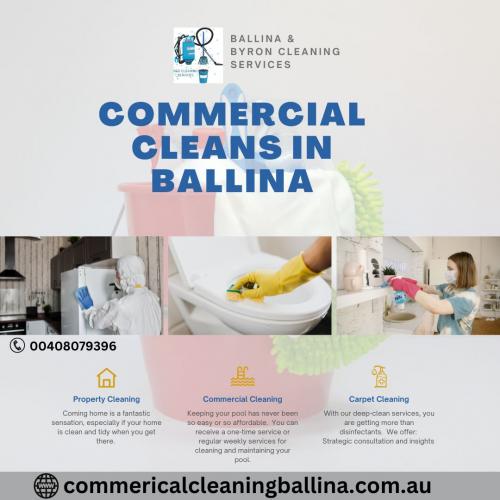A Complete Guide to Aggregate Recycling

Summary: The rise of urbanization and the growing concern for the environment have led to the beginning of aggregate recycling. Aggregates from construction sites are collected and processed for future use. Aggregate recycling is done in 3 major steps, evaluating the concrete source, crushing the concrete, and removing the contaminants. The most commonly used aggregates for recycling and reusing are crushed concrete and glass. There are various properties or characteristics of recycled aggregate like lower specific gravity, higher water absorption, lower compressive strength, etc. Recycled aggregates are used for building pavements, and gutters, constructing roads, and so on. Aggregate recycling is a sustainable way of constructing and is both cost-effective as well as environment-friendly.
A Complete Guide to Aggregate Recycling
The fast pace of urbanization all over the world has led to the building up of new structures by demolishing the old ones. In most cases, the construction materials such as bricks, and concrete are left behind after the demolition services. However, with the increase in concern about the sustainability of resources and other environmental concerns, several cities in the UK like Birmingham have been going for recycling these demolished construction materials by collecting them via earth removal services and further processing them to make them reusable for further use.
What is Meant by Aggregate Recycling?
The process via which demolished concrete aggregate is collected, crushed, and proceeded for future use is known as aggregate recycling.
Concrete recycling is a simple process it includes colleges of the demolished construction materials from the demolition via earth removal services. Commercial companies for grab or digger hire services to collect these construction materials. Thereafter, the materials are broken, crushed as well as processed to make it give a definite size as well as quality. The quality of the recycled aggregate is dependent on the material that is used for recycling.
How is Recycled Aggregate Manufactured?
Manufacturing of RAC or recycled aggregate concrete takes place through 3 different steps. They are:
Evaluating the concrete source: The first step is to evaluate the quality of the concrete source. In this step, the characteristics of the concrete source like its durability, composition, etc. are taken into consideration.
Crushing the concrete: The next step is to crush the concrete into a definite size. The preferred size can range from 20 to 50 mm.
Removing the contaminants: Thereafter the contaminants such as reinforced steel has to be separated via methods like air separation, screening, or using electromagnets. There are certain contaminants that can also be separately processed. This largely depends on the use of recycled aggregate.
What are the Different Kinds of Recycled Aggregate?
The most commonly used recycled aggregates in construction are crushed concrete from previous construction and glass. However, materials like the ash of granulated coal or fiberglass have been used for experimentation, and glass and crushed concrete are the perfect materials for use in concrete for a new project.
The most significant characteristic that is required by the recycled aggregate to add value to the new concrete is its durability, strength, and workability it can provide to the mixtures that do not contain any recycled aggregate.
The use of used concrete and glass as recycled aggregate are used for their properties like the hardness and the resistance that they provide against the absorption of chemical compounds from materials like clay or limestone.
Thus these aggregates are the most perfect ones for adding up to a mixture of the new aggregates. The materials are put into a rock crusher to turn them into fine particles. Thereafter, the crushed materials are run through an aggregate washer to get away from any sort of dust or debris, or impurities. Next, the recycled aggregate is screened carefully and put into the mixture.
Experiments with many other products have been carried out to see if other materials can be used in concrete. However, all of them were found unstable. The right aggregate material has to add value to the actual purpose of the concrete. In many buildings or structures, recycled cement is used along with concrete in spite of crushed glass. The recycled material has to provide the same strength as well as durability as fresh concrete and should also provide resistance to any sort of contamination from any other materials found near the site of construction.
Crushed glass is generally used in concrete for constructing structures that do not need to bear much weight or pressure. The materials of glass that are recycled to be used in concrete are those which cannot be recycled in a traditional way. For example, glass bulbs cannot be recycled in a traditional way. Thus, they are crushed and processed to be used in construction work. To be used in concrete, the glass materials are properly ground, and further, they are added to the mixture of concrete for reuse. These materials are generally used for building walkways or biking paths or for other construction projects that do not need a proper structure.
What are the Different Characteristics of Recycled Aggregate?
The different characteristics or properties of recycled aggregate are as follows:
The RAC or recycled aggregate concrete get reduced in its size during the crushing down process, this gives the recycled aggregate the perfect particle distribution.
The specific gravity in the case of recycled aggregate a lower in comparison to natural aggregated, i.e. from 2.35 to 2.38. Whereas the water absorption capability of recycled aggregate is higher than natural aggregate,i.e. From 3.05 to 7.40 %.
Recycled aggregate has a lower bulk density in comparison to natural aggregate. Thus, the porosity of recycled aggregates is higher than natural aggregates.
The RAC has a lower compressive strength in comparison to natural aggregate.
In the case of recycled aggregates, the abrasion resistance and frost resistance are relatively low in comparison to natural aggregates.
Where are Recycled Aggregates used?
The different usages of recycled aggregates are as follows:
These are effectively used for building pavement or even gutters.
Rubbles of recycled concrete care are used as the coarse aggregate in the concrete.
RAC can be used in producing several bioproducts which can be put into various uses such as making asphalt filler, or material for ground improvement.
Crushed aggregates that are bigger in size are also used for making revetments which are helpful in preventing erosion of soil.
These are used in the construction of roads.
Recycled aggregates are used for making embankments as well as noise barriers.
Recycled concrete can be used for creating the base or for filling drainage structures.
What Makes Recycled Concrete a Sustainable Resource for Construction?
Recycled aggregate or concrete can provide sustainability in several ways. The act of concrete recycling minimizes the quantity of material that has to be landfilled. The construction material is itself recycled along with the materials embedded in it are removable as well as recyclable. Thus, the space needed for landfills turns premium and the requirement for landfills is reduced. Apart from landfills, using recycled aggregate help in reducing the requirement for virgin construction materials. This further, help in minimizing the impact of the process of aggregate extraction on the environment. Thus, it helps in reducing the allover transportation cost that could have been involved in the case of general waste clearance and disposal and for producing new construction materials.
Apart from the management of resources, recycled concrete can help in absorbing a great amount of carbon dioxide gas from the atmosphere. Carbonation occurs in all kinds of concrete from its inward surface. In the case of crushed concrete, the parts of the concrete that have been carbonated can absorb the carbon dioxide from the air and thus reduce the amount of carbon dioxide content in the atmosphere.
Final Thoughts
Therefore, it can be concluded that aggregate recycling is a safe and environment-friendly way of carrying out construction works. For aggregate recycling, the construction materials from demolished construction sites are collected via grab hire or diggers to be used processed and further used for a new construction project. The process of aggregate recycling is not only preferred because it is good for the environment, but it also reduces the cost of the construction project.










Comments